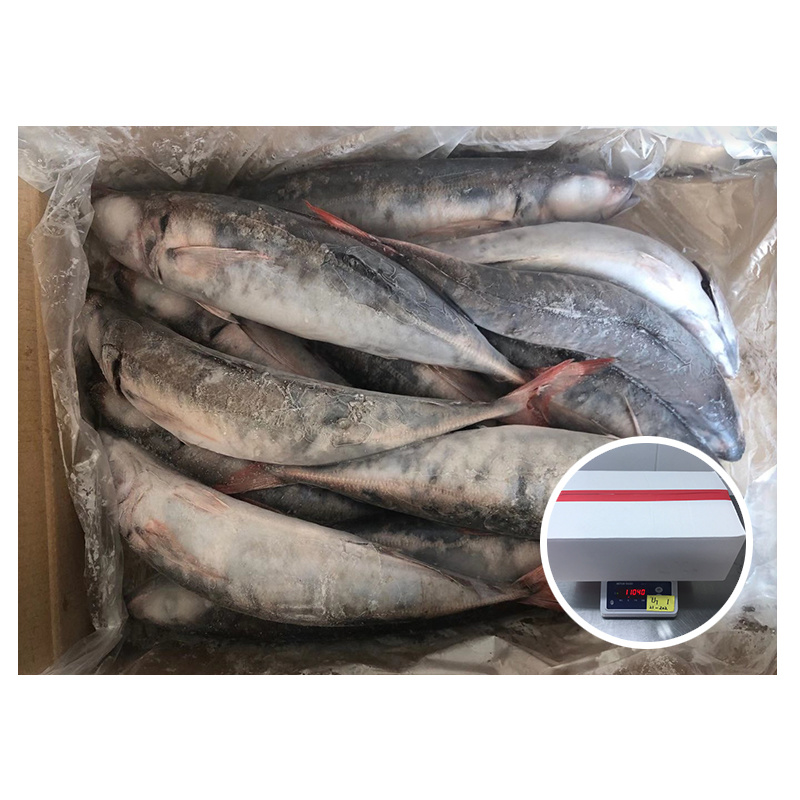The company's mission is to provide high-quality seafood to global buyers.
WhatsApp / WeChat : +8618659702877
Understanding Pacific Mackerel: A Nutritional Powerhouse from the Ocean
2025-05-30
Pacific Mackerel, scientifically known as Scomber Japonicus, is a species of fish that inhabits the temperate waters of the Pacific Ocean. Recognized for their streamlined bodies and distinctive coloration, these fish typically exhibit a greenish-blue back with silver stripes along their sides. This unique appearance not only makes them visually appealing but also allows them to blend seamlessly i
Pacific Mackerel, scientifically known as Scomber Japonicus, is a species of fish that inhabits the temperate waters of the Pacific Ocean. Recognized for their streamlined bodies and distinctive coloration, these fish typically exhibit a greenish-blue back with silver stripes along their sides. This unique appearance not only makes them visually appealing but also allows them to blend seamlessly into their ocean environment, helping them evade predators.
One of the most remarkable aspects of Pacific Mackerel is its nutritional profile, making it a favored choice among health-conscious consumers. This fish is rich in omega-3 fatty acids, which are known for their anti-inflammatory properties and benefits to heart health. Consuming omega-3-rich foods can help reduce the risk of cardiovascular diseases, improve brain function, and support overall health. Additionally, Pacific Mackerel is a good source of high-quality protein, providing essential amino acids necessary for muscle repair and growth.
Aside from its health benefits, Pacific Mackerel is also known for its culinary versatility. It can be prepared in various ways, including grilling, broiling, and baking, making it an excellent addition to a variety of dishes. Its firm texture and rich flavor make it a perfect candidate for recipes ranging from traditional fish tacos to gourmet seafood salads. Moreover, Pacific Mackerel can be found in frozen form, ensuring that its nutritional goodness is preserved and readily available for consumers throughout the year.
In terms of sustainability, Pacific Mackerel is generally considered to be a more environmentally friendly option compared to other seafood choices. Many fisheries adhere to sustainable practices, ensuring that the harvesting of this fish does not deplete populations or harm marine habitats. As consumers become more conscious of the environmental impact of their food choices, Pacific Mackerel stands out as a responsible option for seafood lovers.
In conclusion, Pacific Mackerel (Scomber Japonicus) is not only a delicious and versatile ingredient in the kitchen but also a nutritious addition to any diet. With its numerous health benefits, culinary adaptability, and sustainability credentials, it's clear why this fish is gaining popularity in the agricultural food sector, particularly within the frozen seafood category. Whether you’re looking to enhance your meals or boost your health, incorporating Pacific Mackerel into your diet can be a delightful and beneficial choice.
One of the most remarkable aspects of Pacific Mackerel is its nutritional profile, making it a favored choice among health-conscious consumers. This fish is rich in omega-3 fatty acids, which are known for their anti-inflammatory properties and benefits to heart health. Consuming omega-3-rich foods can help reduce the risk of cardiovascular diseases, improve brain function, and support overall health. Additionally, Pacific Mackerel is a good source of high-quality protein, providing essential amino acids necessary for muscle repair and growth.
Aside from its health benefits, Pacific Mackerel is also known for its culinary versatility. It can be prepared in various ways, including grilling, broiling, and baking, making it an excellent addition to a variety of dishes. Its firm texture and rich flavor make it a perfect candidate for recipes ranging from traditional fish tacos to gourmet seafood salads. Moreover, Pacific Mackerel can be found in frozen form, ensuring that its nutritional goodness is preserved and readily available for consumers throughout the year.
In terms of sustainability, Pacific Mackerel is generally considered to be a more environmentally friendly option compared to other seafood choices. Many fisheries adhere to sustainable practices, ensuring that the harvesting of this fish does not deplete populations or harm marine habitats. As consumers become more conscious of the environmental impact of their food choices, Pacific Mackerel stands out as a responsible option for seafood lovers.
In conclusion, Pacific Mackerel (Scomber Japonicus) is not only a delicious and versatile ingredient in the kitchen but also a nutritious addition to any diet. With its numerous health benefits, culinary adaptability, and sustainability credentials, it's clear why this fish is gaining popularity in the agricultural food sector, particularly within the frozen seafood category. Whether you’re looking to enhance your meals or boost your health, incorporating Pacific Mackerel into your diet can be a delightful and beneficial choice.
Pacific Mackerel Scomber Japonicus
RELEVANT INFORMATION
Exploring the Rich Flavors of Indian Ocean Squid: A Culinary Adventure
Exploring the Rich Flavors of Indian Ocean Squid
Introduction to Indian Ocean Squid
The Indian Ocean is a treasure trove of marine life, and among its most delicious offerings is the squid. Known for its tender texture and subtle flavor, Indian Ocean squid has become a favorite ingredient among chefs and home cooks alike. This article delves into the unique attributes of Indian Ocean squid, its cu
2025-06-02
Exploring the Dynamics of China's Seafood Industry
Dive into the latest trends and insights of Chinese seafood and the evolving seafood industry.
2025-06-01
Understanding Pacific Mackerel: A Nutritional Powerhouse from the Ocean
Pacific Mackerel, scientifically known as Scomber Japonicus, is a species of fish that inhabits the temperate waters of the Pacific Ocean. Recognized for their streamlined bodies and distinctive coloration, these fish typically exhibit a greenish-blue back with silver stripes along their sides. This unique appearance not only makes them visually appealing but also allows them to blend seamlessly i
2025-05-30







